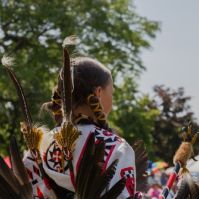 USA Today voted Montogomery as Best Historic City in 2014. The town has been recognized for many of its revitalization projects. It’s probably most well-known for its place in history in the civil rights movement. Martin Luther King once pastored a church in Montgomery. This community has so much heritage, it would take books to detail the city’s contribution to Black history in the United States. If you’ve never before visited the town, put it on your bucket list to understand how it influenced so many people.
USA Today voted Montogomery as Best Historic City in 2014. The town has been recognized for many of its revitalization projects. It’s probably most well-known for its place in history in the civil rights movement. Martin Luther King once pastored a church in Montgomery. This community has so much heritage, it would take books to detail the city’s contribution to Black history in the United States. If you’ve never before visited the town, put it on your bucket list to understand how it influenced so many people.
Dexter Avenue King Memorial Baptist Church
The original name of this church was the Second Colored Baptist Church. It’s now named after Andrew Dexter, the founder of the city, and Dr. Martin Luther King, Jr., who pastored the congregation from 1954 to 1960. It was founded in 1877. From its early days, the church held a place in community service. Dr. King directed the 1956 Bus Boycott from his office in the church. The architectural style of the church is Late Victorian. It’s no cathedral, but it is a National Historic Landmark. Thousands of visitors come to the church each year to get inspired.
Dexter Parsonage Museum
This museum is associated with the Baptist Church, and deserves a special mention. It was home to 12 pastors of the church, including Dr. King. The nine-room building was restored in 2003 to appear like it did when Dr. King lived there. A lot of the furniture in the home was actually used by the King family. Throughout the home, you’ll see exhibits relating to the different pastors and the events that occurred under the watch of each. Make sure to visit the King-Johns Garden for Reflection.
Mount Zion AME Zion Church
This church has more than 140 years of history in Montgomery. It was organized in 1866, but the current building was not finished until 1899. The architectural style is Classic Revival, and this building is not very ostentatious. However, it is on the US National Register of Historic Places. The sides of the church have murals that depict Dr. King and Rosa Parks, as this congregation was also active in the civil rights movement.
First Baptist Church (Brick-A-Day Church)
Don’t confuse this church with the First Baptist Church on Perry Street. This church is another historic landmark, which was founded in 1867 to give blacks a place to worship. At the other Baptist Church, blacks were not allowed on the main floor of the sanctuary, unless they were cleaning. This church organized as the “first ‘free Negro’ institution in the city.” The first frame church was destroyed by fire, but this one was built from 1910 to 1915 in the Romanesque Revival style. It gets its nickname because members of the church were asked to bring a brick each day to build it.
It should be noted that the other First Baptist Church is a beautiful stone building that was completed in 1923. The church itself was founded in 1829, probably one of the oldest churches in the city. It’s now part of the Perry Street Historic District.
Robinson Springs United Methodist Church, Millbrook
The architectural style of this church is Greek Revival, and it’s been beautifully preserved. The congregation was founded in 1828, but the current sanctuary wasn’t built until 1845. It’s a large building, especially for the time when it was built. The sanctuary holds a slave gallery that was used by African American members following the Civil War. Many of the furnishings are original.
St. Elizabeth Catholic Church, Greenville
Although this church isn’t in Montgomery proper, Greenville is a beautiful community not far from the capital of Alabama. This Spanish Revival-style church was established in 1904. The cost of building was $10,000, which was an exorbitant figure in that time. The stained-glass windows are from Germany, which contributed to the expense of the building.



